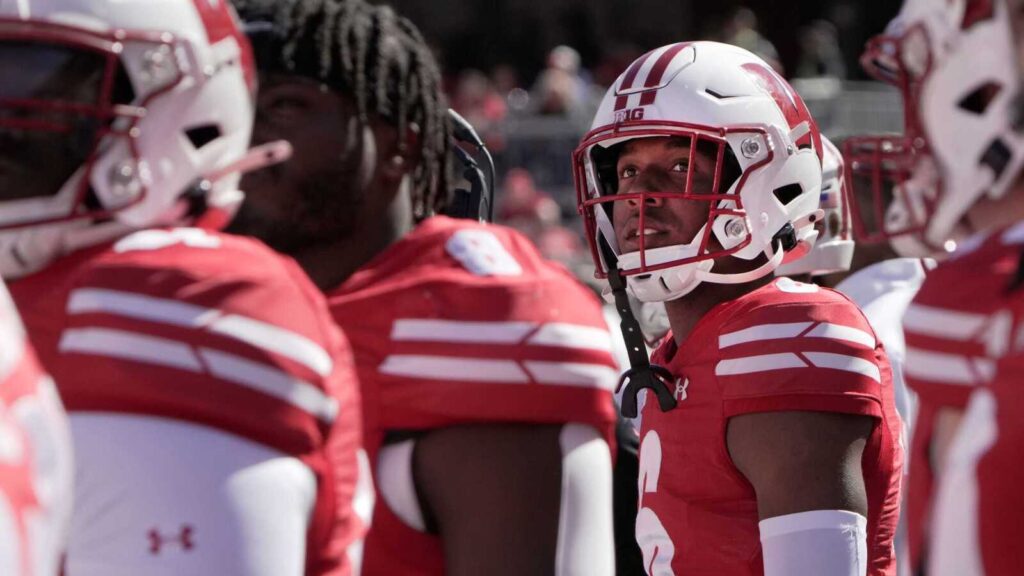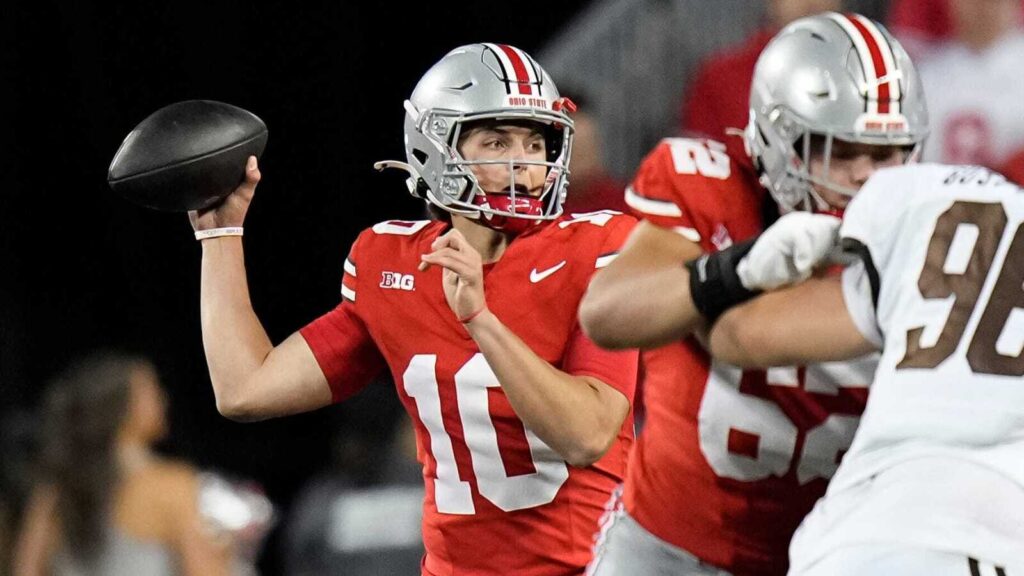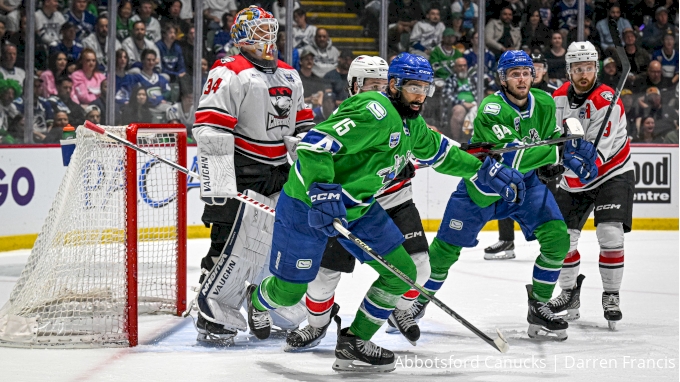As the world churned, Dayton men’s basketball had a summer. A very regular summer. The large pack of returning players meant less reteaching and more amplification of established concepts. Everyone generally knew the terminology. Everyone mostly understood what’s required to compete at a high level, following a 24-win season put together by almost exclusively freshmen and sophomores. No measurable room nor need for revelation. Just do what they did the previous winter, but better.
“It’s just a matter of trying to figure out what we need to do to continue to move the needle,” coach Anthony Grant says, a week before his Flyers officially start fall workouts, willfully unaware of how accurately he’d described the next decade or so for his program.
Dayton begins the season ranked No. 24 in the country, with one of the nation’s more intriguing, Obi-invoking, high-ceiling players on the roster, led by a coach pursuing top 100 prospects and seemingly disinclined to use his alma mater as a vault instead of a pedestal. It could be just another year. Or it could be another step toward a higher plane of existence for a school that, as its athletic director put it, considers itself a boutique basketball firm, specializing in playing and hosting the sport and more.
Somewhere out there in the not-so-way-ahead lies the big Then What. The earth is moving beneath every school everywhere. The scramble for firm footing is on. If Dayton maximizes itself in a way hinted at only three seasons ago, can it sustain its existence where it is? Or will continued excellence require a change of conference decals? In short: If Dayton gets real good and stays real good, and College Sports Inc. might leave the middlemen behind … well, then what?
“We’re going as hard as we can every day and act as if we have to fight for every square inch of real estate that we have, whether that’s in scheduling or recruiting or retaining a high-quality staff,” athletic director Neil Sullivan says. “At the end of the day, we’ve done it from where we are. Just three years ago, we had the national player of the year, we had the national coach of the year and we’re by all accounts a No. 1 seed. So once you know it can be done, regardless of the headwinds, the only path I have is to continue on the path.”
There’s no existential crossroads yet. First comes the part where Dayton establishes its worth.
Start with winning. There has to be a pretty decent amount of that. In the 2019-20 season, to which Sullivan alludes, there was a lot of winning. Twenty-nine victories. Obi Toppin’s national player of the year award collection. The No. 3 ranking in the final Associated Press poll. The only problem was the world shutting down due to a pandemic before Dayton could fully flesh out what the best version of itself looked like, and build off that momentum.
Still, in the last 13 non-pandemic seasons, the Flyers have averaged 23.2 wins. They were one win shy of the Final Four in 2014. Outside of 2019-20, though, Dayton has spent two weeks, total, inside the top 20 in that span. There’s clearly a disconnect between the results and the recognition. And does that say anything about Dayton, The Brand? “They definitely have their headwinds,” says Larry Mann, the executive vice president at rEvolution sports marketing, who previously did stints at ESPN and FOX. “It’s not a major market. Now they do have a really strong following in central Ohio. It seems like the local businesses have supported some NIL stuff. So you’re seeing some of that success. But I’ll use an example: We have a brand we represent that does a lot of school deals. Continental Tire buys a lot of courtside signage at a lot of basketball venues. Dayton’s not on the list — not because of the lack of success, but because of the media market.”
??? pic.twitter.com/V4ZQ8N3F05
— Dayton Basketball (@DaytonMBB) October 13, 2022
But piling up the wins, and earning greater visibility, can at least help to start to fix this. In that way, the next six months (and more) take on a different level of significance.
It may not be enough to do more of the same, as good as more of the same would be. “First of all, we don’t feel like we’ve arrived at anything that we need to maintain,” Grant says. “We have to continue to evolve, and I feel like we have the people in place from an administrative, from a support standpoint to help us continue to do that. And I’m a piece of that. So I have to do my part, as our players do. I think it’s in a good place in terms of moving the program forward.”
So how well-equipped is Dayton to keep moving forward and force its way into bigger and broader conversations?
The infrastructure, and philosophy on resourcing men’s basketball, don’t appear to be impediments. It’s a private school, so publicly available numbers may be more of a general idea than anything, but Dayton claimed $5,976,600 in men’s basketball expenses for the 2020-21 reporting period, according to U.S. Department of Education data. That’s more than comparable Power Six conference schools Butler ($5,017,012) and DePaul ($5,559,830). That’s also more than three of the four schools soon headed to the Big 12 from the non-power league ranks, save for Houston, which reported north of $7 million in men’s hoops spending and which more or less already has made the climb Dayton might be aiming to make.
While acknowledging there are levels of blueblood-like spending that Dayton won’t match anytime soon, the aim is to be at or near the forefront of its cohort. “Call it 350-plus NCAA Division I basketball teams, and only 10 percent of those will be selected as an at-large NCAA Tournament (team),” Sullivan says. “So the way we frame it around here is, if that requires top 10 percent performance, then that requires top 10 percent investment. Essentially, we just believe in meeting the demands of the marketplace around resources, because it’s one NCAA Tournament and the standard is the standard. That’s what’s required to give yourself a chance. So that’s how we’ll invest in it.”
Based on that rationale, it’s fair to surmise Dayton would invest more if it has more to invest — like, say, via an enhanced media rights package. For the moment, it can do what it has to.
The school has made what Sullivan calls an “exceptional investment” in both Grant and the money committed to his assistant coach salary pool — which, again, aren’t public info. “If we weren’t a private school and you were to (compare to the) average Big Ten schools, ACC schools — I mean, that’s what we do,” the athletic director says. A $76 million upgrade to UD Arena, completed in 2019, focused largely on improving the fan experience. But program-specific changes — such as a new and improved locker room — were not spared. Bells and whistles can matter to prospects, like it or not. So better bells and whistles matter, too. “It looks like a power (conference) arena for sure,” junior forward Toumani Camara says. “(The locker room) is huge. It’s nice. Almost looks like an NBA locker room. We got a logo everywhere, everything is neat, everything is modern.”
Among current Flyers, Camara has a good perspective on this; he spent the first two seasons of his college career at Georgia, starting 48 of 57 games, touring a league in which programs have gone into hyperdrive in the resource race. “The money is different,” Camara concedes, but he says the player experience at Dayton doesn’t suffer for it. The strength and conditioning and athletic training departments meet all needs. Sharing a practice gym with the women’s basketball team — at Georgia, the men and women have their own gyms — hasn’t hindered individual development. “At the end of the day, I’m still able to get in the gym when I need to,” Camara says. “We know when the women are practicing, and then after that, the gym is open almost 24/7. It doesn’t really affect us.”
But that’s the controllable stuff. The variable, inescapably, is the program’s ability to stuff that locker room with high-end talent. No program advances its station without, at some point, upgrading its overall ability level. This brings us to DaRon Holmes, and the question of how repeatable DaRon Holmes is.
The 6-10 forward from Arizona was the consensus No. 38 recruit in the Class of 2021 and, as such, the highest-ranked prep player to sign with Dayton. Ever. A watershed moment for Grant and his staff. And Holmes delivered in 2021-22, winning Atlantic 10 Rookie of the Year honors and placing on the all-conference second team. Holmes also stayed put, which is no guarantee for players who do very good things at non-power conference schools. Add in the 25 pounds or so he’s tacked onto his frame since the end of last season, and there is a very Obi-like trajectory to his 2022-23 season. “Their message was if you buy in and do what you need to do, you’ll love it here,” Holmes says. “And I have so far. Here I have honestly everything I need to be as good as I can.”
DaRon Holmes averaged 12.8 points and 2.3 blocks per game as a freshman. (Geoff Burke / USA Today)
Dayton emerging from Holmes’ final four that included Arizona, Cal and Marquette — after Holmes took official visits to well-equipped Arizona and Marquette, and unofficial trips to multiple other Pac-12 schools — suggests Dayton’s resource package is competitive enough. The complication is how singular Holmes’ recruiting relationship to Dayton was. Holmes says he was watching film of the Flyers and how they utilized Toppin when his coach and trainer, August Mendes, suggested Dayton as a possible college destination. After that discussion, Mendes reached out to the Flyers’ staff on Holmes’ behalf. After that, Holmes says, the mutual interest grew in earnest.
“Honestly, I was taking my decision really serious, going into senior year, trying to find the right fit,” he says, by way of explaining the Synergy Sports video deep dive on Dayton. “That’s what I would say inspired me. You see a lot of kids go high-major and it doesn’t work out for them. They don’t take it that seriously. I just thought I didn’t really have to go that route.”
But, arguably, Holmes went that route because he recruited Dayton first. “Once we were able to get to know each other, I think he saw a fit, and he felt comfortable with the plan that we had for him,” Grant says. It worked out great for Dayton. Holmes is an avatar, the top 40 recruit who can go out of his way to extol the program’s virtues to Class of 2023 big man target Jazz Gardner, who reportedly has programs such as Illinois, Georgia, Arizona State and Houston in pursuit. “Definitely talked to him about really thinking hard about his decision,” Holmes says. “We’re like a big family. I really try to put my word in.”
It’s also not a dynamic anyone can count on again.
Because the Flyers’ roster has 11 players listed with sophomore eligibility, this year’s freshman class was bound to be small, and therefore not a great indicator of how much momentum Grant and Co. have in recruiting. The lone first-year newcomer is four-star swingman Mike Sharavjamts, the consensus No. 90 prospect for ’22 and, as such, seemingly a nice add. Still, telltale classes loom. Whether Holmes is a harbinger or a quirk in the system, we’ll know soon enough. And, surely, the results this season will influence the recruiting pull, one way or another.
The 56-year-old Grant is in charge of all of it, and a leadership change by way of power-conference poaching could disrupt Dayton’s upward mobility. As a Class of 1987 graduate from the school, there is personal investment that might overcome overtures. He also, like any coach, might crave another shot at what’s perceived to be a higher level after making one NCAA Tournament in six years at Alabama. Dayton naturally isn’t taking any chances on this count, endeavoring to establish that it is high level: It has made what Sullivan calls an “exceptional investment” in Grant and the assistant coach salary pool, even if the numbers aren’t public info. Anecdotally, it’s informative that Grant can’t even think of requests he’s made of the administration that the administration duly stepped up to fill.
“I really haven’t had to ask,” the Flyers coach says.
Should Dayton hum along and sweep through a 2022-23 season that looks somewhat like a new reality, the Then What likewise continues to come into greater focus.
College athletics, as Sullivan puts it, is enduring a “once-in-a-generation period of change.” “You’re not sure when it’s safe to move about the cabin again,” he jokes, but standing still is not an appealing long-range plan. The Atlantic 10 has produced six at-large bids in the last four NCAA Tournaments. With the addition of Loyola Chicago for the 2022-23 season, Sullivan says it’s a sufficient platform. But he also notes the need for more Quad 1 and Quad 2 opportunities league-wide — and the challenges in scheduling them. The bottom of the conference has to be better, full stop. These issues are not as acute in, say, the Big East, which presumably would be the only step-up conference fit for Dayton in any scenario.
The Big East’s opinion on Dayton is the only opinion that matters, to be clear.
The league’s calculation of the value-add determines all — starting, not least, with any program’s capacity to be a near-lock for at-large invitations. That brings a league more NCAA Tournament units and therefore more money, as opposed to splitting the same pie into more pieces. “Is there a pro rata uptick so the other 11 don’t go backwards in terms of their share?” Big East commissioner Val Ackerman told The Athletic during her league’s recent media day. Naturally, potential eyeballs matter, too. Dayton, as a media market, comprised about 460,000 television households in 2020-21, per William Mao, senior vice president of Octagon Global Media Rights Consulting. As of 2021, Dayton was the 65th largest market in the country, per Neilsen. On the other hand, Dayton also was the top team in the Atlantic 10 in terms of conference games-only audience consumption when Octagon last ran the numbers, and second to VCU overall.
But it seems the appeal of any program increasingly can be driven by on-floor success that mitigates a smaller market. There just has to be a lot of success. “All else being equal — and that’s a big, big caveat — in the case of college basketball, I think winning probably is more important,” Mao says. “In a lot of cases, the men’s basketball program in any DMA (designated market area) is not going to be a big driver of resonance or relevance. Most of the time the strength of the brand is driven by the football program, if we’re completely honest. Putting that lens on that question, the fact that you can get more national exposure due to strong performance in your conference tournament and/or going relatively deep into the NCAA Tournament, that type of exposure and brand value — let alone the economics that come from the NCAA units ± all those things would trump the programs’ relevance in terms of DMA.”
Or as Ackerman puts it succinctly, and significantly, from the vantage point of someone driving the decisions on these matters: “I would say in this environment, basketball focus and the prospects of future basketball success matter the most.”
So can Dayton be too successful as a boutique basketball firm for the boutique basketball conference to ignore, if or when it wants to beef up its ranks? Or, alternatively, can Dayton reach a higher plane and maintain its footing fine right where it is?
Nobody at Dayton knows. Mostly because the primary objective at Dayton is to do enough winning to make it a good problem to have. “It really is about consistency,” Sullivan says. “We could all name schools that peak and fall. It’s been a challenge since COVID for a lot of us, but we were on the trajectory. And it’s about consistency in staying there, year in and year out and year in and year out, where you’re winning conference championships and you’re in the mix in the NCAA Tournament. I believe we were headed that way. And I think that’s what Anthony I are after, is a level of consistency, which is challenging in this environment with the period of instability that we’re in.”
As ever, it is about Dayton giving people a reason to give Dayton a look. And then hoping people’s eyes are opened wide by what they see.
The Athletic’s Dana O’Neil contributed to this report.
(Top photo: Justin Casterline / Getty Images)






